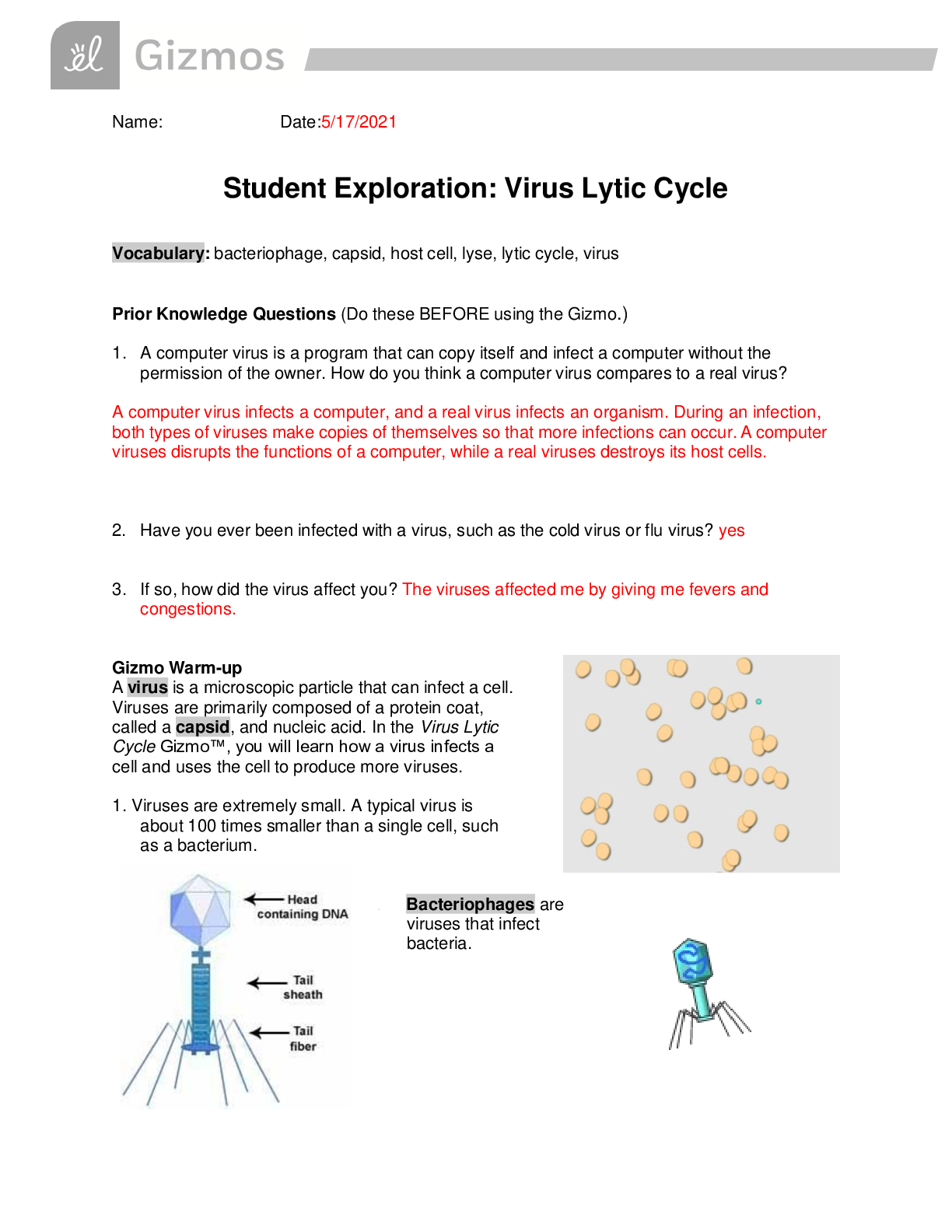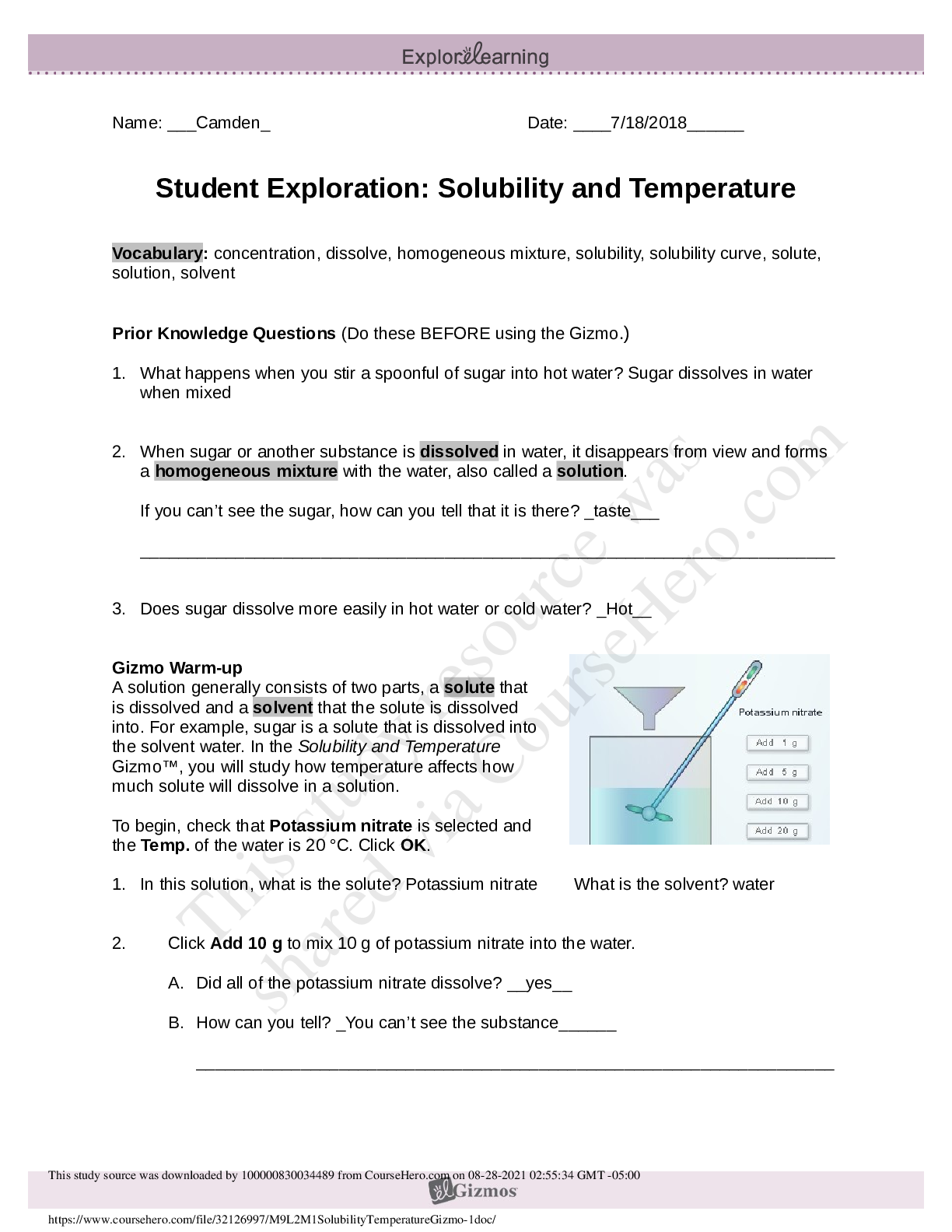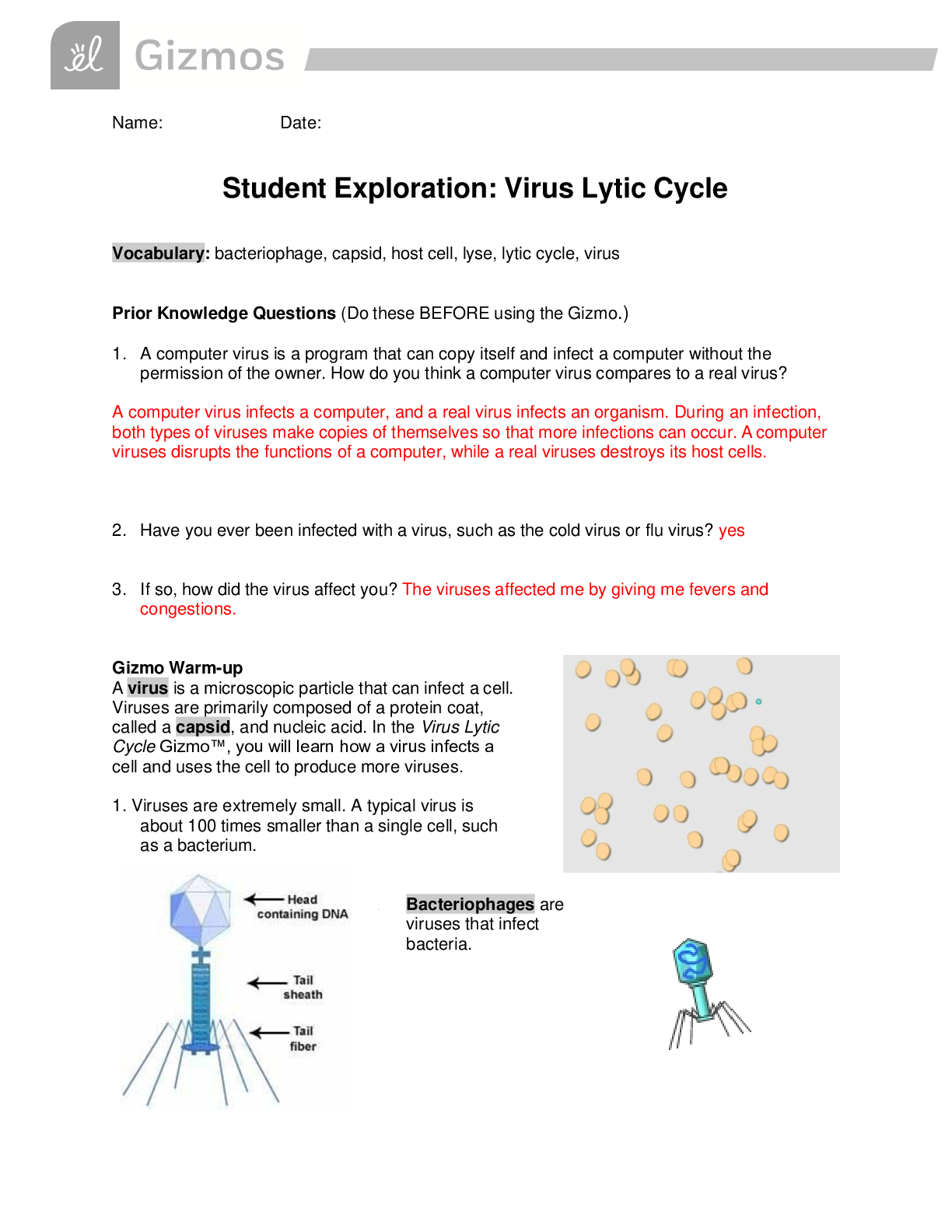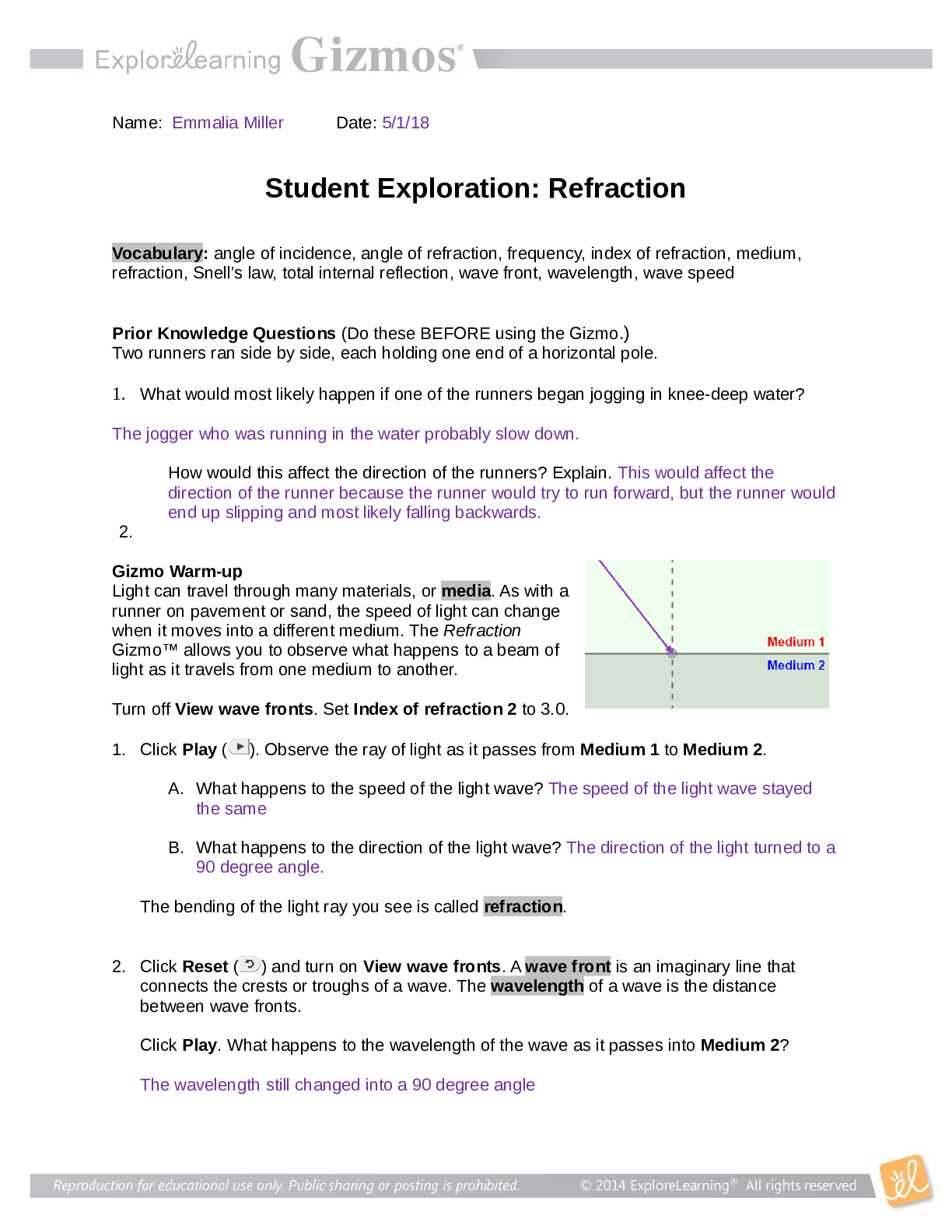Biology > GIZMOS > Gizmo Virus Lytic Cycle Student Exploration Sheet | Student Exploration: Virus Lytic Cycle (answered (All)
Gizmo Virus Lytic Cycle Student Exploration Sheet | Student Exploration: Virus Lytic Cycle (answered) Latest Summer 2021
Document Content and Description Below
Gizmo Virus Lytic Cycle Student Exploration Sheet Name: Date:5/17/2021 Student Exploration: Virus Lytic Cycle Vocabulary: bacteriophage, capsid, host cell, lyse, lytic cycle, virus ... Prior Knowledge Questions (Do these BEFORE using the Gizmo.) 1. A computer virus is a program that can copy itself and infect a computer without the permission of the owner. How do you think a computer virus compares to a real virus? 2. Have you ever been infected with a virus, such as the cold virus or flu virus? 3. If so, how did the virus affect you? Gizmo Warm-up A virus is a microscopic particle that can infect a cell. Viruses are primarily composed of a protein coat, called a capsid, and nucleic acid. In the Virus Lytic Cycle Gizmo™, you will learn how a virus infects a cell and uses the cell to produce more viruses. 1. Viruses are extremely small. A typical virus is about 100 times smaller than a single cell, such as a bacterium. 2. Bacteriophages are viruses that infect bacteria. Introduction: Unlike living organisms, viruses cannot reproduce on their own. Instead, viruses infect host cells, taking over the cell’s machinery to produce more viruses. This process is called the lytic cycle. Question: What are the steps of the lytic cycle? 1. Observe: Use the navigation arrows on the DESCRIPTION tab to read about the stages of the lytic cycle. Using your own words, summarize each step of the cycle. Step Summary 1 ↓ ↓ ↓ ↓ (Activity A continued on next page) Activity A (continued from previous page) 2. Analyze: The yellow ring inside the bacterial cell represents the bacterial DNA. Why does this structure disappear by step 3 of the lytic cycle? . 3. Describe: How does a virus destroy the host cell’s DNA? 4. Describe: How are new viruses reproduced? 5. Think and discuss: Why can’t a virus reproduce on its own? 6. Justify: To lyse is to burst apart or explode. Why do you think a virus’s reproduction cycle is called the “lytic cycle”? Activity B: Spread of infection Get the Gizmo ready: • If necessary, click Reset. Question: How does a viral infection spread? 1. Predict: Suppose that a virus infects a small population of bacteria. Predict how the numbers of viruses, infected cells, and uninfected cells will change as the infection progresses. On the blanks below, write increase, decrease, or stay the same. Viruses: Infected cells: Uninfected cells: 2. Observe: Click Play ( ), and watch the simulation. Describe what you see. 3. Test: Click Reset, and Select the BAR CHART tab. Turn on Show numerical values. Click Play, and watch each bar as the simulation runs. What do you notice, and how does this compare to your predictions? 4. Analyze: What trend do you see in the third column of your data table? 1. Explain: How would you explain this trend? Activity B (continued from previous page) 6. Interpret: Select the GRAPH tab. Run the Gizmo again, and observe what happens in the SIMULATION screen when the graph shows a decrease in the viruses’ population size. A. Why does the number of viruses sometimes increase and sometimes decrease? At some points during a viral infection, all of the viruses are inside host cells. During these times, it appears as though the virus population is zero. B. Sometimes when a virus enters a cell, it becomes dormant for a while. Why might this make it difficult for a doctor to diagnose a viral infection? 7. Extend your thinking: AIDS is one disease caused by a virus infection. The virus attacks immune system cells known as T cells. Based on your observations from the Gizmo, how would you explain the data shown on this graph? [Show More]
Last updated: 1 year ago
Preview 1 out of 5 pages

Reviews( 0 )
Document information
Connected school, study & course
About the document
Uploaded On
Aug 17, 2021
Number of pages
5
Written in
Additional information
This document has been written for:
Uploaded
Aug 17, 2021
Downloads
0
Views
47

.png)






 (1).png)

















